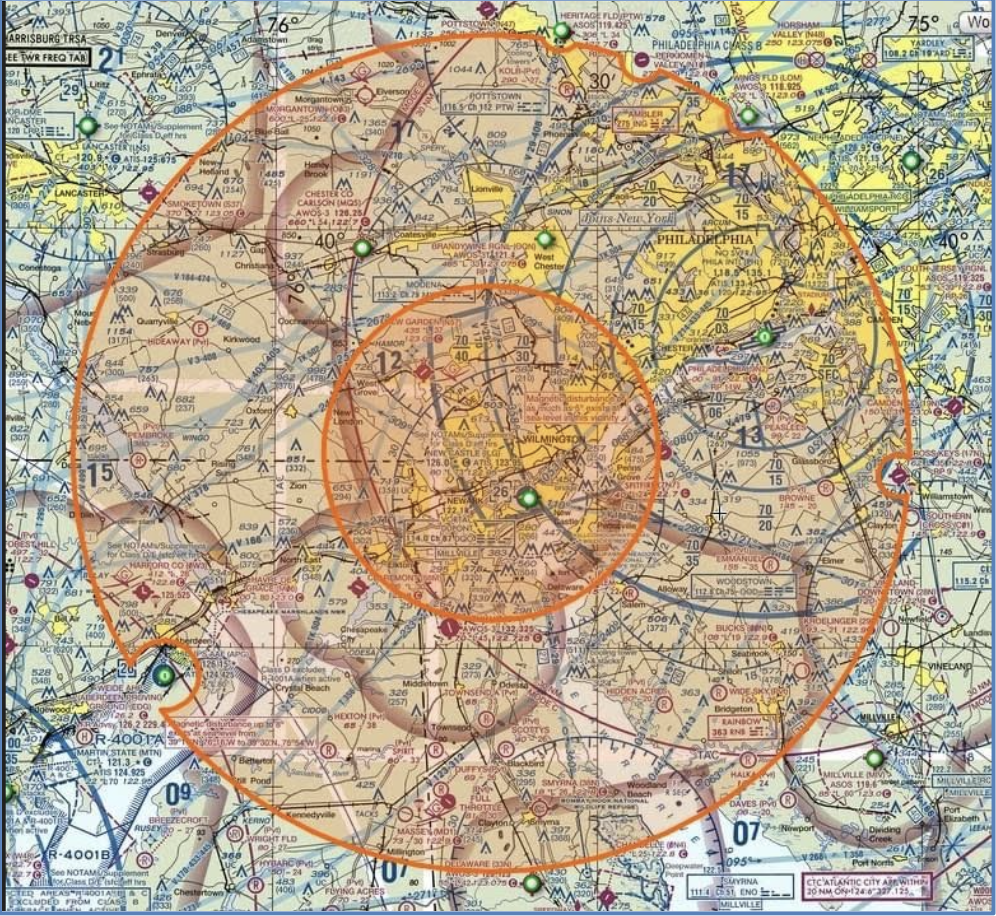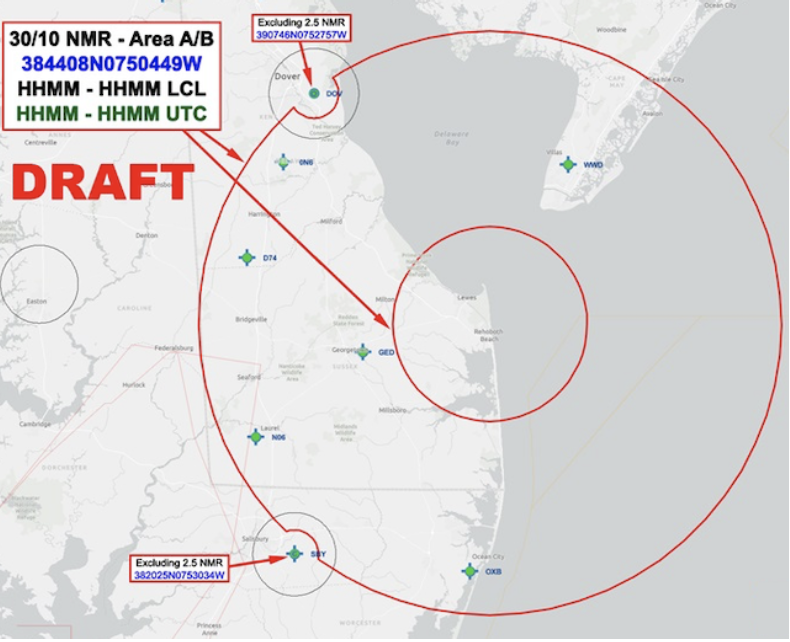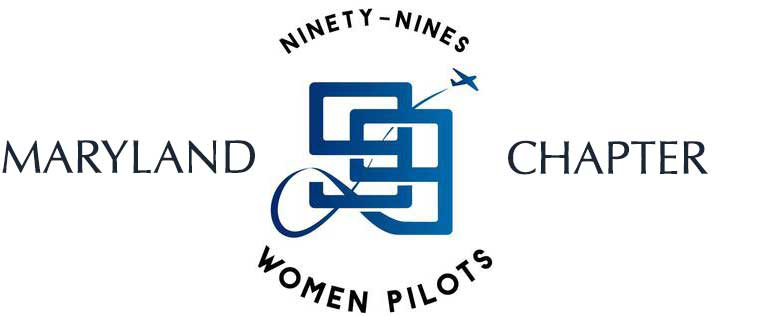
On February 5-8, 2021, the first Presidential TFR went into effect for the Biden residence at Wilmington, DE. There are two rings; a 12-mile no- fly zone (inner ring) and a 30-mile restricted zone (outer ring). The TFR encompasses many airports on the outer ring, including Massey (MD1), Clairmont (58M), Summit (EVY), Harford Co (0W3), Chester Co/Carlson (MQS), and Brandywine (KOQN); New Garden (N57), Wilmington (KILG) and Spitfire (7N7) are within the no-fly zone. There are cutouts for Cross Keys (17N), Wings Field (LOM), Perkiomen Valley (N10), Heritage Field (KPTW) and Phillips Army Airbase at Aberdeen Proving Ground, MD.
In anticipation of the TFR, I attended an FAA Safety Briefing entitled “When the President Comes to Town.” The first part of that briefing concerned the need to always verify, generally through Flight Service (Wx Brief -800.992.7433), that a TFR had popped up. The importance of having a recorded briefing could not be stressed enough. They noted that no one should be in the TFR without a squawk code.
My home base airport is 0W3, Harford County; it is a non-towered airport. The FAAST briefers instructed that pilots should file either a VFR or IFR flight plan prior to departing with Flight Service (or any way that they usually file). Within the ring, if the airport you are departing from has the remote radio ability to contact Clearance Approach, you could get the squawk through ATC. Otherwise, the briefers recommended a phone call to the appropriate Clearance Delivery on the ground before departing an airport to get a squawk code. Put the squawk code in your transponder immediately when starting up and call Clearance Approach as soon as you are airborne. The emphasis was not to squawk 1200 at any time within the TFR. The special squawk must be used. Because of my location, I assumed Potomac Clearance Delivery (866.429.5882). The briefers noted that once you are clear of the TFR, they will advise a frequency change, and that you should be well clear of the TFR ring (GPS may not be entirely accurate).
My main concern was getting the squawk code after filing a VFR flight plan—because Clearance Approach/Delivery does not see VFR flight plans. I heard from another pilot who flew the TFR early on Saturday who relayed that Potomac declined to give him a code because they don’t see VFR flight plans. He then had to call Flight Service and was advised to file two SFRA flight plans (one for departure and the other for arrival). He did and was given a discrete code for the first one by Potomac. He put in the code, radioed Potomac after departure with the squawk code and continued to talk to them. He flew over Fallston (W42, outside the TFR), but did not land and they let him keep the same squawk code and return to 0W3 with the same code.
The DC Special Flight Rules Area flight plans are to be used in that airspace and require that the entrance to the SFRA gate be identified. While they allow Potomac Approach/Delivery to see the filed flight plan, it is questionable as to how the SFRA flight plan applies to the TFR.
My experience on Monday February 8 was similar. I filed 2 VFR flight plans on Foreflight the night before, then called Potomac Clearance Delivery to get the squawk. They refused to acknowledge the VFR flight plans and said I had to call Flight Service. I called Flight Service and they saw my VFR flight plans and asked why I had filed them. I explained that the TFR was in effect and they said they’d have to check. They eventually agreed that it was. After that, they spent a long time discussing what to do and eventually decided that I had to file SFRA flight plans, and did that with me on the same call.
With SFRA plans filed, I called Potomac back. They now recognized the flight plans and gave me a squawk. We turned on the plane, kept the transponder on Standby initially and then put in the code. We departed and called 125.525 on the radio as we departed. Potomac was very busy—it was a little heart-stopping until they recognized us. As soon as we were out of the TFR ring, they dropped us—told us to squawk 1200.
The TFR was cancelled as we were in the air at about 9 AM, although it was supposed to go until 1600. I worry about what we would have done had Potomac not recognized us again. In total, we spent at least 20-30 minutes on the phone trying to get the squawk code before the flight. Potomac and Flight Service did not work together, and the SFRA flight plan was an unusual way to address it.
I relayed the summary of the flight in emails to both FAA and AOPA. The FAA (Philly FSDO) responded by letting me know that there was a phone number listed at the end of the Wilmington TFR NOTAM for the security operations center (Philadelphia) that would have been the best number to call. They noted that Potomac Approach control is well versed in operations regarding SFRA flight plans, however the Wilmington TFR NOTAM did not require them. They ultimately said that “Philadelphia ATC will provide feedback to Flight Services regarding referral of stakeholders to the correct point of contact to obtain the discrete transponder code.”

AOPA said that they had been in contact with FAA Security about the issue, and that the Philly FSDO was incorrect. They flatly stated that we should not call the number in the NOTAM for a squawk code, because the only people that can assign a squawk code are the local ATC facility – in our case, Potomac (PCT).
Their advice was different and notable. They said that, while pilots have to have a VFR flight plan filed, there is no need to activate it. It is a security requirement, not an ATC one – security needs a flight plan on file so they have a contact if something goes wrong. They recommended contacting Potomac Approach and just ask for the code – without bringing up the flight plan.
The next time there’s a TFR for Wilmington, I will try that advice—not mentioning the flight plan and just asking for the code. The purpose of this article is to offer you my experience and to generate thought and discussion. I do think processes may change in the future. Things to remember are to file the plan(s), allow for more time, don’t depart without a code, and keep trying. I’m sure it will get easier.

